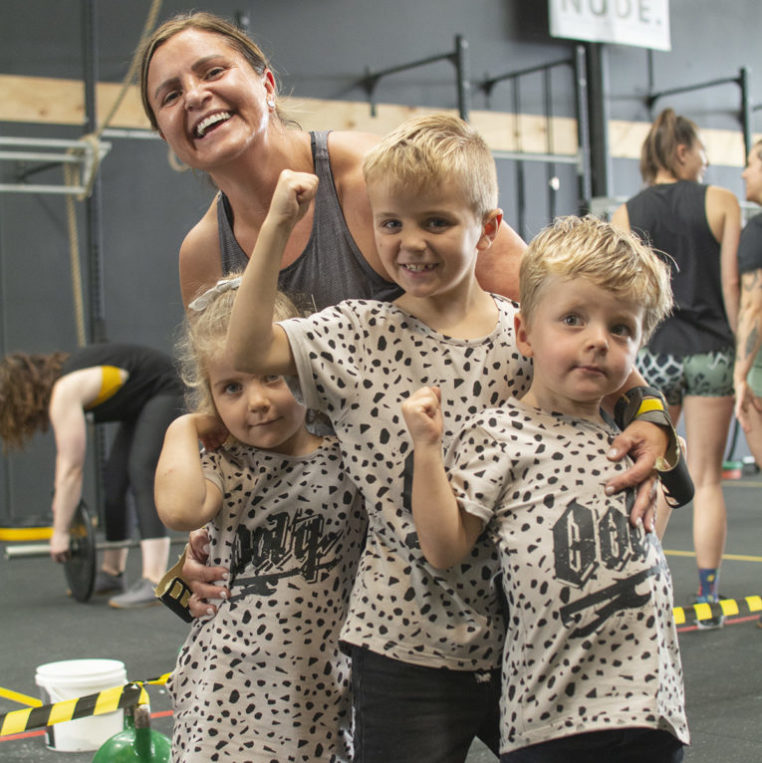Crossfit for Kids & Teens.
Forming healthy attitudes and habits to exercise is important at a young age.
Good habits are as hard to make as bad habits are to break…and it seems that lifelong habits around healthy exercise form at a very young age and are largely set by the time a person enters their teenage years. Children and Adults in Australia and across the Western world are making increasingly poorer health choices, especially around the levels of exercise they participate in. So before we get into how sport and exercise programs like CrossFit for Kids and Teens can make new, lasting and beneficial habits, it’s important to review a little bit of the research that paints a picture of our current state of health and the lifelong benefits of healthy exercise habits.
A growing state of inactivity.
Research by the Australian Institute of Health and Welfare and Australian Bureau of Statistics has found that too many Australians are not active enough for various reasons, including poor health, injury and lack of time. Coupled with additional barriers in the form of school closures, gym closures and lockdowns, and it becomes easy to see how Australians have indeed changed how, and how often, they exercise:
- more than half (55%) of adults do not meet the physical activity guidelines
- 2 in 3 (70%) children aged 2 to 17 do not meet the guidelines
- only 3 in 10 pregnant women meet the guidelines
- only 2% of teenagers aged 13 to 17 meet the guidelines
- almost half (44%) of working-age adults spend much of their work day sitting
- physical inactivity is responsible for more than 6% of the cancer burden in Australia
- physical inactivity is linked to various diseases including diabetes and heart disease.
The physical and mental benefits.
There is a wealth of research available that paints a clear picture as to why physical activity is crucial for children as they grow up. Being active improves health and wellbeing at any age and the most up to date scientific advice suggests that children who exercise benefit from:
- reduced risk of obesity
- increased cardiovascular fitness
- healthy growth of bones, muscles, ligaments and tendons
- improved coordination, balance and ability to physically relax
- improved sleep, brain development and social skills
- mental health benefits, such as greater confidence
- improved personal skills, including cooperation, teamwork and leadership.
So, how do we turn this ship around?
Much like a ship, the turning circle is not small but it is totally achievable and worth it. To do so we need to understand three things:
- The difference in lived experience
- What is recommended
- What our role as adults is in supporting healthy habits
The difference in lived experience.
Being a child today is a far more complex proposition to the childhoods their parents had. Mobile phones, internet, social media and a general risk avoidance when it comes to parenting means children don’t get the chance to challenge their bodies in the ways their parents did through things like climbing trees, rolling down a steep hill, skateboarding, riding BMX or playing tiggy.
What is recommended.
The Australian Government recommends that ‘Children and young people should participate in at least 60 minutes (and up to several hours) of moderate to vigorous-intensity physical activity every day,’ and, spend no more than two hours a day using electronic media for entertainment (such as computer games, internet, TV), particularly during daylight hours.’
What our role as adults is in supporting healthy habits.
Before you slump your shoulders and resign, remember that nothing worthwhile is ever easy. Changing habits takes time, doubly so when it comes to exercise as not every option will appeal to every child.
Parents, carers and caring adult friends and family can help the children in their lives to be physically active by leading by example and prioritising exercise in a number of ways, including:
- be physically active yourself.
- make sure that family outings offer opportunities for physical activity
- encourage your child to walk or ride their bicycle for short trips rather than drive them
- support your child’s efforts in sport. Make sure you’re there cheering them on
- set time limits on sedentary activities like computer games and television.
- speak with your child’s school on how to encourage greater participation in sports
This is where CrossFit Kids comes into its own.
CrossFit is a highly engaging, effective and habit-forming training program combining key elements of gymnastics, weight lifting, cardio-vascular and body-weight training. It is incredibly flexible and adaptable to the needs and age of all participants; from children and teenagers to adults young and old. The benefits of dedicated CrossFit for Kids and Teens programs include:
- a program that meets the physical and developmental needs of kids and teenagers
- a constantly varied and exciting programming that improves all areas of fitness
- a fun and sociable environment that is competitive without being aggressive
- a sense of discipline, confidence and teamwork
- children can start as young as 7-years-of-age.
- intimate class sizes that allow for greater relationship development
Finding a Crossfit for Kids class.
So the only question now is – where can I find a CrossFit gym with kids and teens classes that is appealing and affordable? Well, look no further than CrossFit Raven. Ride on over (if it isn’t too far) and come on in; we’ll be glad to see you and welcome you to watch one of our many classes throughout the week. If you are feeling up to it, join a class. Nothing motivates a youngster more than seeing their parents or adult friend try something new. Have a chat about it afterwards and see if the spark of interest is there. If so, start the adventure and see where it takes you.
There is no time like now so jump to it and support your children develop the strength, flexibility, coordination, and fitness they need to tackle their pre-teens and adolescence with confidence.


